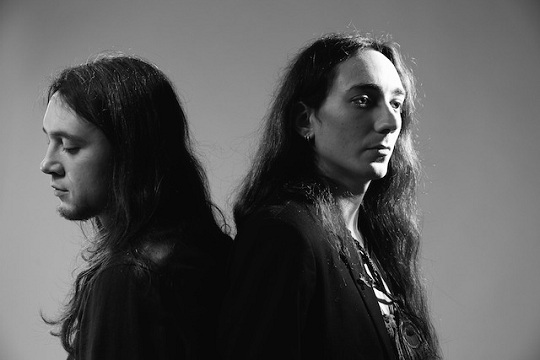Post Melodic Black Metal
Black Metal is infamous, blasphemous, and controversial, yet always on the agenda. Since its second wave was dominated by the Scandinavian and Nordic scene in the 90s, the Metal scene has never been the same.
The style created followers and a KVLT status for a long time, whether due to the ideologies or the music itself.
But in this last decade in particular), Black Metal has become a recognized branch of what we can call “pop culture”. From mentions in clips of more mainstream singers and musicians, designers holding fashion shows using the aesthetics of the genre, in addition to gifs of Varg Vikernes smiling in his judgment being one of the most shared and memetized contents on Tumblr,
In this wave of popularity, a crop of bands emerged that were a little softer in their sound but present elements of the style and are bringing them into areas that are not very accepted. Like Deafheaven, the new favourite punching bag of the Metal scene on online forums and social networks. In addition to bands like Liturgy with their Black Metal/prog/avant-garde, which, despite its frontman’s curious sound and bizarre manifestos, has been mocked more for its non-KVLT aesthetic.

A crop of European bands, formed by groups such as Amesoeurs and Alcest, demonstrated this more Melodic Black Metal, influenced by genres such as post-punk and shoegaze. Creating what some call “post-black metal” (consolidating the posterization of the genre in a verbal form, as we saw above), in the scene most influenced by DSBM, Lantlôs and Heretoir began to identify these new sounds and incorporate them into their music. With the growth of this new wave of bands in parallel with the success of Black Metal and all its aesthetics and culture in the interest of modern teenagers, identification with teenage angst is inevitable. It’s a matter of being at the right time and in the right place, combined with the speed of information circulating on the internet.
We cannot forget the more esoteric and avant-garde side. Which in the last decade has yielded names like Batushka, Cult Of Fire, Death Karma, Downfall Of Nur and so on. They make this music extremely mystical, conceptual and epic in its execution, with elements that vary from Doom and Death, epic arrangements and compositions and even world music details. With this culture of anonymous members, strong aesthetic appeal with great influence on cults and religions oppressed or hidden by common sense.
In addition to this movement on the old continent, we also have variants of post-black metal on the American continent. Whether by North American bands like A Pregnant Light, Deafheaven, Airs or even Brazilian bands like Shyy, in addition to elements of shoegaze and post-punk, much of post-hardcore and even screamo has been experimented with by the most current bands of this school of post-black metal.
Resuming….
The coldest and most primitive culture of Black metal has always been about isolation and individualism. Do you think that someone who connects with the nihilistic culture of black metal will come out of their cave or individualistic universe to send hateful messages to a pop musician who made a video mocking the style? Of course not; they have better things to spend their energy on.
Whether or not the genre is mainstream and growing in popularity doesn’t matter to them; they want to create dark and disturbing music. Whether it will borrow elements from other genres? Fuck it, they will try to see the ritualistic projects of Attila Csihar, the new sound orientations of Shining, the creation of super groups like Twilight or the maturation of Krieg.
Several artists’ repulsion with the /kvlt trends has always been visible, like Impaled Nazarene and their refusal to use corpse paint, Kvaforth’s many tired comments towards childish fans, or even Xasthur in which his only member lived lost in sunny California and created extremely depressive, technical and melodic folk music.
The expansion of “Post Black Metal”, its experimentalism and the fruits of this growth and maturation refreshed the genre, presenting a prolific movement in recent decades. I would even say that we live in a fourth wave (considering the DSBM scene as the third wave) of the style, which has already yielded a very varied and interesting crop of artists and older bands reinventing themselves and establishing themselves in this new millennium. This growth and desire to expand and recreate is inevitable in the world of art, and before all the war and ideology, black metal never stopped being that: Art.
